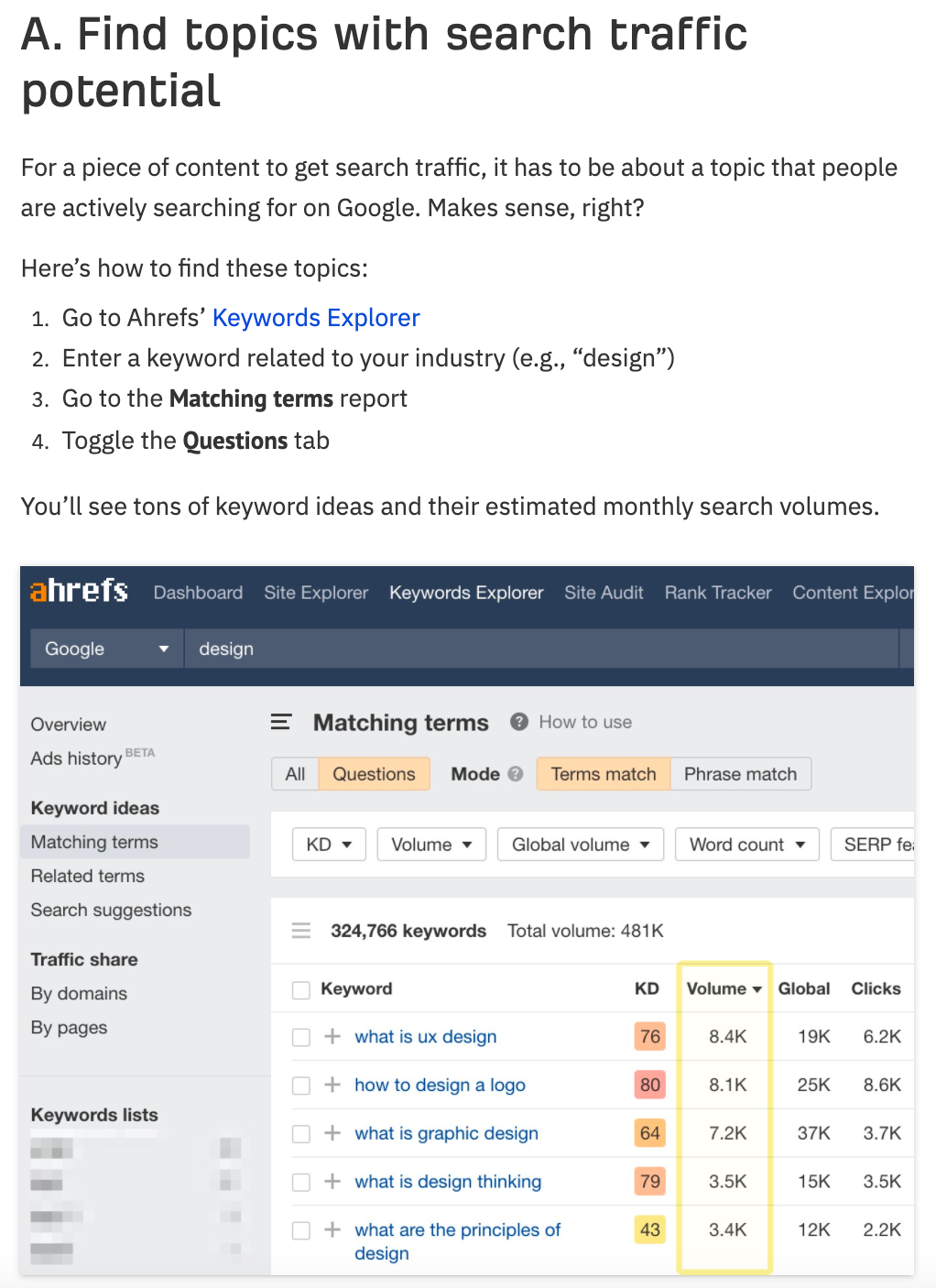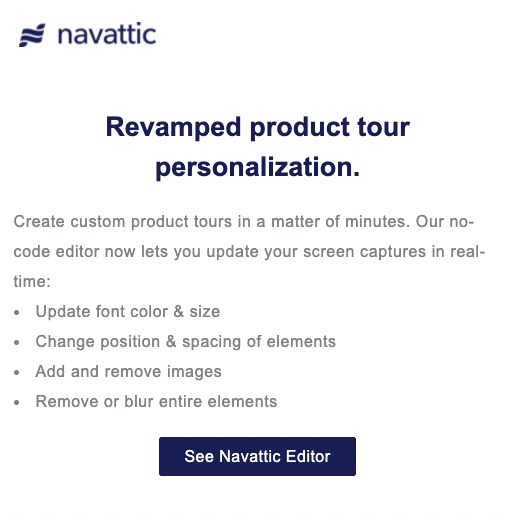5 Ways to Drive Pipeline With Product-Led Content

Co-Founder, Head of Product
You may have heard that Product-led growth (PLG) has no place in a traditional go-to-market motion.
However, as PLG grows in popularity, sales teams are embracing it and finding that product-led sales can actually boost results.
Using tools and concepts from PLG, sales teams can better inform prospects on their product. They can also demonstrate benefits and build excitement, even if the business isn’t completely suited (or ready) to be fully product-led.
Product-led sales is a strategy that can drive your pipeline and boost conversions. But how do you get started?
By embracing product-led content.
What is product-led content?
The standard B2B content marketing strategy is built around delivering engaging content aimed at building awareness and converting prospects.
Typically, content is heavily search-engine optimized in order to gain clicks. It also aims to generate leads by having prospects sign up for a list, download a piece of gated content or contact sales for a product demo.
In this sort of approach, the product itself is largely absent from the content.
In contrast, product-led content deliberately weaves the product into the content, using it to illustrate how readers can use the product to solve their problems.
SEO tool Ahrefs is widely acknowledged as a leader in product-led content. Take a look at how they do this in their blog, What is SaaS Marketing? 8 Tactics We Use at Ahrefs:

Here we see that the blog is a helpful how-to guide, but the Ahrefs product is front and center in each section. The product is not hidden away, but rather openly shown as the best solution for the customer’s problem.
This type of content supports a product-led sales strategy by:
- Educating prospects about the product’s benefits
- Demonstrating how the product solves the prospect’s pain points
- Creating a product-led pipeline of enthusiastic and informed leads
Why is product-led content useful?
Traditionally, it’s been the job of sales to educate buyers on why their product is the right fit for the prospect’s problem.
But product-led content can make your sales team’s job easier in three ways:
Better time-to-value
If your sales motion relies on prospects requesting a demo or sales call, time-to-value can be hard to optimize. According to Lead Connect, 55% of companies take over five days to respond to demo requests. Product-led content allows you to show value upfront, and beat slower competitors.
More qualified leads
Educating buyers before and during the sales process creates better qualified leads. Leads who convert because they’ve understood your product and how they might use it are far more likely to convert than people who signed up for gated content, but were never really bought into your product in the first place.
Responsive to B2B buyer trends
45% of B2B buyers are 25-30 years old. This means buyer behavior is changing, and sales tactics need to change too. This new demographic of buyers expects to do their research and act independently.
As a bonus, product-led content can also aid retention by educating existing customers on features and benefits they may not have discovered yet.
5 examples of product-led content to drive your pipeline
Product-led content doesn’t need to be complicated. You also don’t need to reinvent your whole pipeline strategy.
Here are 5 examples of product-led content that you can start using right away:
1. Product-led blogs or articles
As we’ve already noted, creating a product-led blog or article is a fairly simple shift. If a typical B2B blog post focuses on keywords and rankings, then the starting point for product-led content is the product itself.
Fio at Contentfolks shares the Ahrefs formula for creating product-led content, using the Business Potential Score for ranking content ideas:
3 - My product is an irreplaceable solution
2 - My product helps, but it’s not essential
1 - My product can be mentioned in passing
0 - No way my product can be mentioned
When evaluating topics for blogs or articles, product-led content should always score 2-3 on the scale so that there’s enough opportunity to seamlessly showcase your product.
This doesn’t mean you shouldn’t still optimize your article for search engines. It just means you can stop hiding your product in your posts.
2. Product-led webinars
Webinars are a great way to provide value to your customers, showcase your solution and build your pipeline.
Product launches or releases are a natural moment to put your product in the spotlight during a webinar, but you can create product-led webinars on a wide range of topics.
Imagine your product is a collaboration solution for teams. You could run webinars on:
- The future of work
- Collaboration in the post-pandemic workplace
- How marketers [or whoever your target audience is] can work better from home
Of course, the options are endless, and will be driven by your understanding of your customers and what they need.
And using the exact same Business Potential Score as above, you can identify sessions where demonstrating your tool is naturally integrated into the webinar.
The added benefit of the webinar is you get to demonstrate live how the product meets a need your audience is already interested in — making the value even more clear and immediate.
3. ABM campaigns
Whether it’s using videos, product demos, webinars, whitepapers, email campaigns or other channels, ABM campaigns are a great fit for product-led content.
Why?
Because successful account-based marketing has already pushed you to understand your audience’s needs and pain points. And with that depth of knowledge, you can create product-specific content that outlines the precise value proposition for a specific vertical.
Plus, if you’re using ABM to target existing clients, you can use product-led content to:
- Drive new sales to existing customers through upselling or cross selling
- Improve retention by highlighting solutions that customers may not be aware of or fully utilizing
- Nurture customers to become advocates — recommenders who will draw new prospects into your pipeline
4. CTAs
A typical CTA for many SaaS companies is “Contact us to book a demo.” As we’ve already established, this sales motion can lengthen the time to value and frustrate new generations of B2B buyers.
Instead, try experimenting with a call-to-action that drives leads directly to your product, letting them experience the value right away.
Two of the most widely used product-led CTAs are free trials or freemium versions.
However, these can be costly and require extensive support.
An increasingly popular alternative is an interactive product tour – a no-code, guided demo of your product that lets buyers experience your product’s core features quickly and independently.
Here’s an example of how Front uses a product tour on their website:

5. Product-led email campaigns
Your email campaigns are another great way to incorporate product-led content.
There are many ways to highlight your product directly in your customer’s inbox:
- Sharing a product tour or video as part of your email onboarding sequence
- Highlighting how new releases or products address pain points
- Sharing customer use cases
- Delivering tips and tricks to get the most out of your product
- Providing a follow up to a product demo
For instance, at Navattic, we tried including a product tour in one of our email marketing campaigns and saw a 15% click-through-rate:

Finally, your email list also allows you to segment your messaging to each section of your sales funnel:
- informing your new leads
- exciting qualified leads to encourage conversion
- nurturing existing customers and advocates
👉 Looking for more examples? We've outlined 6 product led marketing examples that you can implement today.
Successful Product Led Content
The key to driving a product-led pipeline is recognizing how product-led content can be used to engage prospects and customers at every stage of the pipeline and through multiple channels.
There’s no one “right way” to deliver product-led content, but various strategies and tools you can use depending on your message, your target audience and your existing sales strategy.